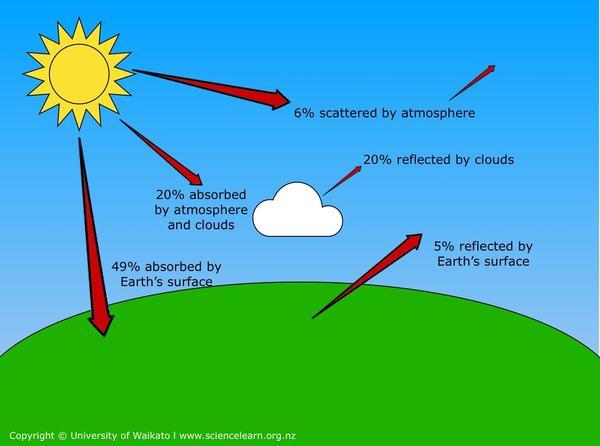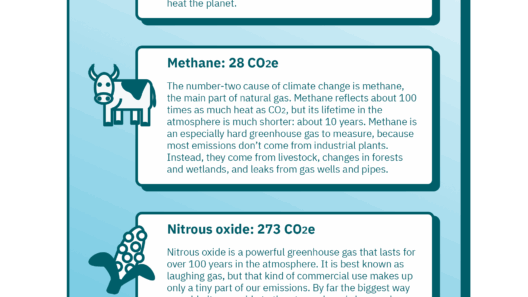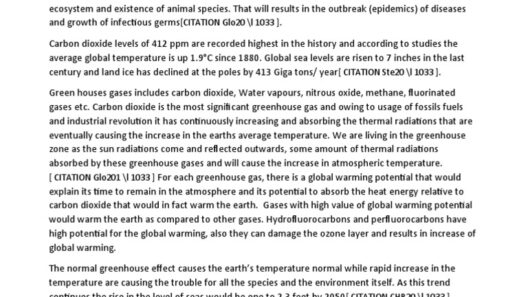The greenhouse effect is a natural phenomenon that keeps our planet warm enough to sustain life. However, human activities have exacerbated this effect, leading to climate change and other environmental challenges. It is imperative for individuals and communities to adopt practical measures aimed at controlling the greenhouse effect and reducing the accumulation of greenhouse gases in the atmosphere. This article presents actionable strategies that can be employed to mitigate the impacts of these gases and foster a more sustainable environment.
Understanding the Greenhouse Effect
The greenhouse effect occurs when certain gases in the Earth’s atmosphere trap heat, creating a thermal blanket around the planet. This process is largely driven by carbon dioxide (CO2), methane (CH4), and nitrous oxide (N2O), which are emitted through various human activities such as burning fossil fuels, deforestation, and industrial processes. Observations have shown a correlation between the increased concentration of these gases and rising global temperatures. While the greenhouse effect is essential for life, an imbalance creates detrimental consequences, such as extreme weather events, rising sea levels, and biodiversity loss.
Individual Action: Small Changes Make a Big Difference
Household Energy Consumption
One of the most impactful ways individuals can help control the greenhouse effect is by reducing energy consumption at home. Simple actions, such as switching to energy-efficient appliances, can significantly lower household emissions. For instance, LED light bulbs consume up to 80% less energy than traditional incandescent bulbs. Additionally, behaviors like unplugging devices when not in use or utilizing smart power strips can minimize phantom energy consumption.
Embrace Renewable Energy
Transitioning to renewable energy sources is crucial in the fight against greenhouse gas emissions. Homeowners can consider installing solar panels, which harness sunlight to generate electricity. Not only does this reduce reliance on fossil fuels, but it can also lead to long-term financial savings. Moreover, many utility companies offer renewable energy programs that allow consumers to support green energy production indirectly. Choosing green options when available can greatly contribute to long-term sustainability.
Transportation Choices
Transportation is a significant contributor to greenhouse gas emissions. Individuals can significantly reduce their carbon footprint by employing alternative modes of transport. Opting for public transportation, carpooling, biking, or walking can help mitigate the impact of personal vehicles. Moreover, when purchasing a new vehicle, considering an electric or hybrid model can make a substantial reduction in emissions over time.
Community Engagement: Collective Action for a Greener Future
Local Initiatives and Education
Community involvement is a powerful way to combat climate change. Joining or supporting local environmental groups can amplify individual efforts. These organizations often organize educational events, community cleanups, and tree-planting initiatives. Raising awareness about the importance of reducing greenhouse gas emissions not only motivates others but also fosters a collective sense of purpose. Educational programs targeting schools can instill environmental responsibility in the younger generation, ensuring a sustainable future.
Supporting Local and Sustainable Practices
Supporting local businesses and purchasing locally-sourced products can significantly reduce transportation emissions associated with food and goods. Engaging in community-supported agriculture (CSA) is another effective way to promote sustainability. This practice not only supports local farmers but also ensures that consumers have access to fresh, seasonal produce. Additionally, investing in sustainable practices such as organic farming helps reduce chemical usage and greenhouse gas emissions from food production.
Government and Policy Advocacy
Advocating for environmental policy changes can create a ripple effect that supports larger-scale reductions in greenhouse gas emissions. Engaging with local representatives, participating in public forums, and voting for environmentally conscious policies are essential steps residents can take to influence legislation. Support for regulations that promote renewable energy, comprehensive waste management, and emissions standards is fundamental to tackling climate change effectively.
Innovative Solutions: Technology and Research
Investing in and supporting technological innovations can yield promising solutions to the greenhouse effect challenge. Carbon capture and storage technologies aim to reduce emissions from industrial sources by capturing CO2 and storing it underground. Moreover, advancements in sustainable lab-grown meat alternatives can significantly diminish the methane emissions associated with traditional livestock farming.
Promoting Research and Development
Encouraging ongoing research in renewable energy sources and sustainable practices is vital. Collaborating with educational institutions and supporting grassroots innovations can lead to breakthroughs in materials and processes that minimize environmental footprints. Exploring advancements such as bioplastics from organic materials or enhanced energy storage systems can contribute to a more sustainable economy.
Conclusion: A Collective Responsibility
In summary, controlling the greenhouse effect requires a multifaceted approach that encompasses individual responsibility, community engagement, and advocacy for systemic change. The choices made by each person contribute to the larger tapestry of our planet’s future. By adopting energy-efficient practices, supporting local economies, and advocating for responsible policies, society can take substantial strides toward mitigating the adverse effects of greenhouse gases. Tackling climate change is not a solitary endeavor; it necessitates collaborative action and a shared commitment to a healthier planet for generations to come.






